As we head out to take in the sights, here's a view across the street from our lodging - an area that has undergone much revitalization. There's even a handy mini-market just outside our place for eggs and bread and the like.
Gdańsk, a city over a thousand years old, is on the Baltic coast of northern Poland. With a population of over 470,600 Gdańsk is the capital and largest city of the Pomeranian Voivodeship. It is Poland's principal seaport and the country's fourth-largest metropolitan area.
There's some olden structures still to be found, but much of the city had to be rebuilt following 1945. Initially, apart from Allied air raids in the latter part of the Second World War, Gdańsk largely escaped damages. By the end of 1944 though, more than a million refugees from East Prussia arrived in the city hoping to escape the Soviet Army. During the final battle, Gdańsk was almost completely destroyed.
There's some olden structures still to be found, but much of the city had to be rebuilt following 1945. Initially, apart from Allied air raids in the latter part of the Second World War, Gdańsk largely escaped damages. By the end of 1944 though, more than a million refugees from East Prussia arrived in the city hoping to escape the Soviet Army. During the final battle, Gdańsk was almost completely destroyed.
Our city walk now officially begins, as directed by Rick Steves' guidebook.
First we see Highland Gate, which marks the beginning of the Royal Route
First we see Highland Gate, which marks the beginning of the Royal Route
Torture House (Katownia) and Prison Tower (Wieża więzienna):
Even the littlest sights are picture worthy.
At the top of the Mansion of the Society of Saint George and Golden Gate.
Ulica Długa (The Long Lane) leads from the Golden Gate to the Długi Targ (Long Market), and the Green Gate.
Much of this area was rebuilt after the close of WWII.
Gdańsk Main Town Hall is one of the finest examples of the Gothic-Renaissance historic buildings in the city, built at the intersection of Ulica Długa and Długi Targ, in the most popular part of Gdańsk.
The oldest fragments of the town hall date from 1327 to 1336 - the building was then much smaller in size, which led to its expansion in the subsequent years. The first major expansion of the building began in 1378. The town hall's tower was completed in the years of 1486-1488. After a fire in 1556, the town hall was rebuilt and expanded with Renaissance influences by Dutch architects and master-builders. Heavily damaged in WW2, with the loss of the top of the tower, it was repaired and reconstructed by 1952.
The oldest fragments of the town hall date from 1327 to 1336 - the building was then much smaller in size, which led to its expansion in the subsequent years. The first major expansion of the building began in 1378. The town hall's tower was completed in the years of 1486-1488. After a fire in 1556, the town hall was rebuilt and expanded with Renaissance influences by Dutch architects and master-builders. Heavily damaged in WW2, with the loss of the top of the tower, it was repaired and reconstructed by 1952.
Amazingly rebuilt structures with mostly accurate facades, and 20th century interiors.
Neptune's Fountain, a mannerist-rococo masterpiece, is located at the Długi Targ in front of the entrance to the Artus Court, and constructed in the early 17th century.
A weather station, and a tourist ship, diesel-powered.
Cool metal-work on a building installation, and a museum ship moored downtown.
Sun drenched tourists on the river.
"One of the few remnants of pre-Christian culture (prior to 966 A.D.) are these works of stone, collected from around the countryside of Northern Poland, specifically the localities of Bronówo, Gałdówo, Mózgówo, and Susz. Locals refer to these humanoid forms as Stara Baba Pruska (ENG: Old Prussian Hags), even though they are male figures and are mostly endowed with militant accessories - swords, shields and quivers. Others hold a cross-armed gesture as if in a self-embrace or are carrying a drinking horn (see Hag #2). So what exactly are we looking at? They've adopted names like 'The Monk' and 'The Blasphemer of Mózgowo', however, these nicknames probably have very little to do with their actual histories."
St. Mary's Church (1502 A.D.) is a Brick Gothic Catholic church is among the three largest brick churches in the world. Between 1536 and 1572 St. Mary's Church was used for Catholic and Lutheran services simultaneously.
It is 105.5 metres (346 ft) long, with the nave 66 metres (217 ft) wide. Inside the church is room for 25,000 people.
It is 105.5 metres (346 ft) long, with the nave 66 metres (217 ft) wide. Inside the church is room for 25,000 people.
Time for some lunch and beer sampling.
Gerri probing for some information from a local lady.
"The Great Armory was built in 1600-09 on the medieval line of the city walls. A working arsenal until the 1800s, the armory remains the finest example of Renaissance architecture in the city. It was designed by Flemish architect Anthonis Van Obbergenand. The armory was badly damaged in WWII and had to be completely rebuilt.
St Dominic’s Fair in Gdansk is one of the biggest commercial open-air events in Europe. It was established in 1260 by Pope Alexander IV, and since then has been annually organized in the streets of Gdansk – with a short period of a break during and after the Second World War, and during Covid 2020-21. In 2022, St Dominic’s Fair ran from the 23rd of July until the 14th of August.
"The Market Hall in Gdańsk near the Dominican Square is a monumental object, exhibition center, and modern shopping center. The building was constructed at the end of the 19th century. It preserved the original, modern Baroque look. Its interior is adapted for present-day business - it consists of 100 sale and service facilities. The cellars are occupied by the Archaeological Museum presenting, among others, coins, devotional articles, ceramics, and the ossuary in a form of a wall from human bones.
The hall was designed by Kurt Fehlhaber and opened to the public in 1896. The building held almost 200 market stalls selling meat, vegetables, fruits, dairy products, fish, and baked goods. The hall was to replace the entirety of street business with an exception of the fish market.In 1999, during the renovation, workers with archeologists discovered that the 12th-century business settlement and the church of Saint Nicholas existed on this spot. Buried human remains of several thousand people were found under the surface of the Dominican Square during the archaeological work."
St Catherine's Church, built 1227-1239, is the oldest church in Gdańsk. Originally Catholic, it was a Protestant church from 1545 until the end of World War II in 1945, after which it returned to the Catholic. Note the very nice ceiling, yeah, in 2006 a major fire caused much damage to the roof.
A park featuring a sculpture of Copernicus, born in a city south of Gdansk.
An amber museum is located in a medieval prison and torture house:
Amber digging fun:
Solidarity, a Polish non-governmental trade union, was founded on August 14, 1980, at the Lenin Shipyards (now Gdańsk Shipyards) by Lech Wałęsa and others. In the early 1980s, it became the first independent labor union in a Soviet-bloc country. Solidarity gave rise to a broad, non-violent, anti-Communist social movement that, at its height, claimed some 9.4 million members. It is considered to have contributed greatly to the Fall of Communism.
Gerri is checking out a section of wall from the original Lenin Shipyards.
The Monument to the fallen Shipyard Workers 1970 was unveiled on 16 December 1980 near the entrance to the Lenin Shipyard. It commemorates the 42 or more people killed during the Coastal cities events in December 1970. It was created in the aftermath of the Gdańsk Agreement and is the first monument to the victims of communist oppression to be erected in a communist country.
Entrance to the Lenin Shipyards:
1989-90:
Meeting hall where negotiation took place between the union and the government, now an interesting little museum, and free admission.





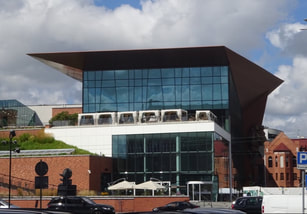



















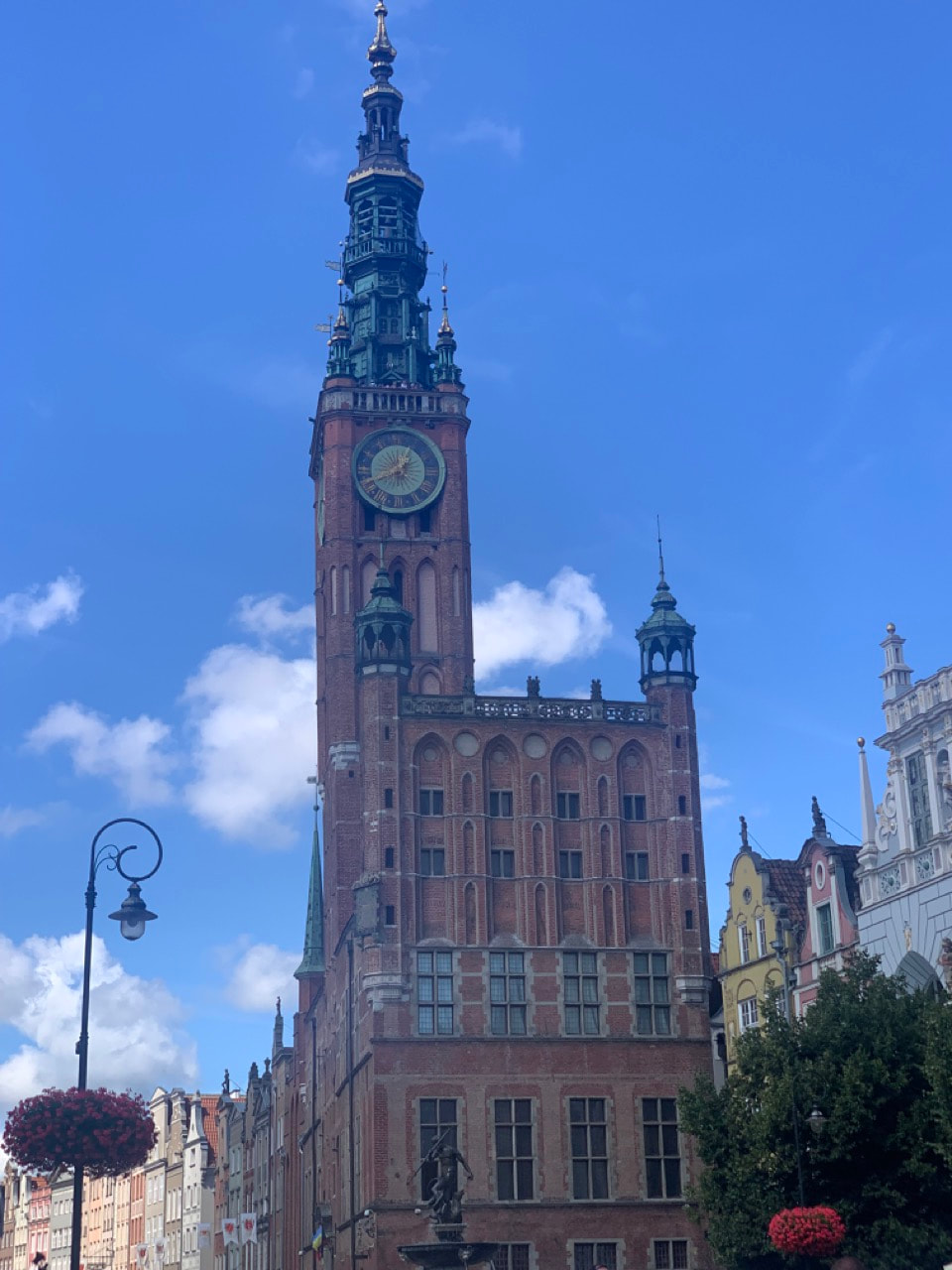

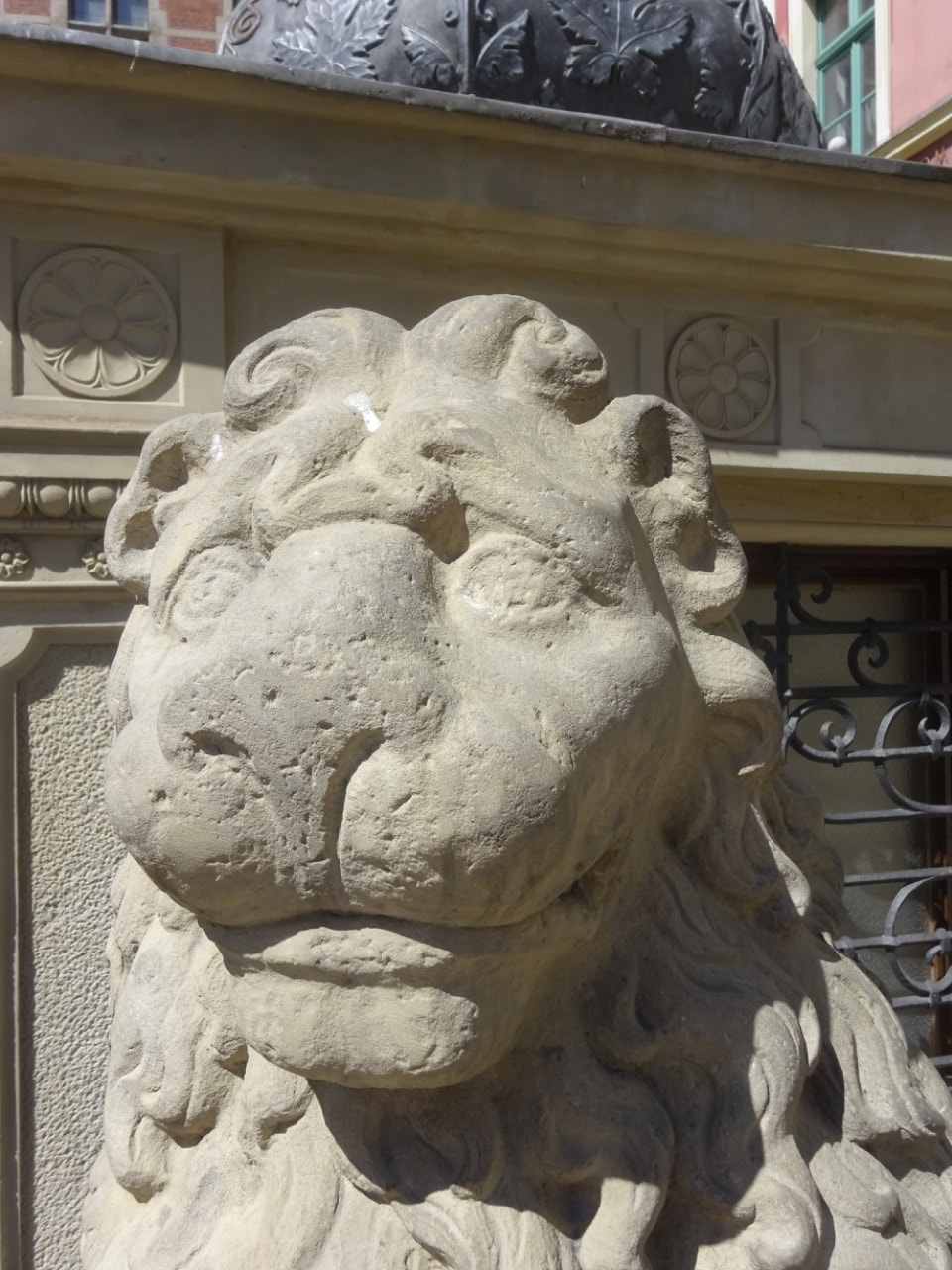


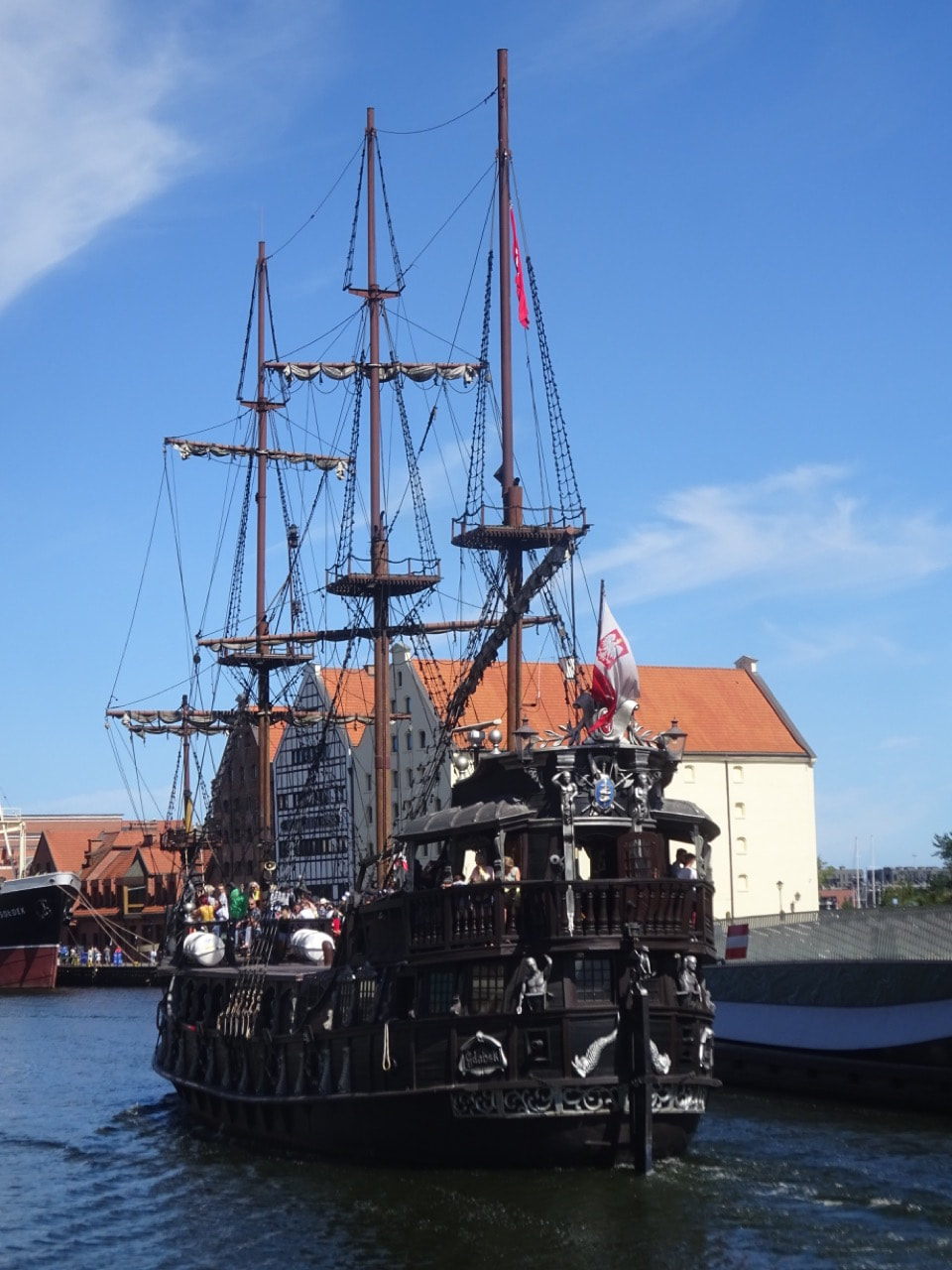
























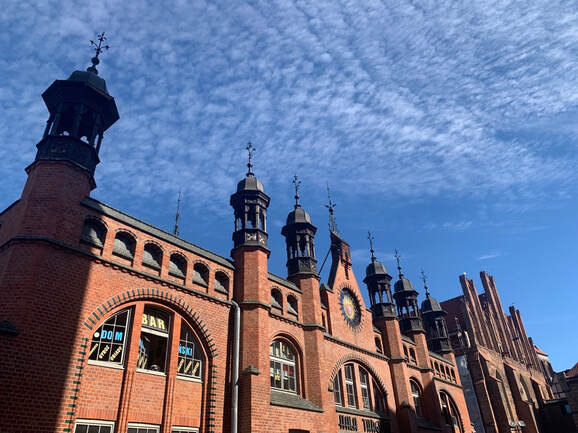
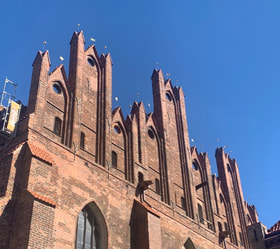














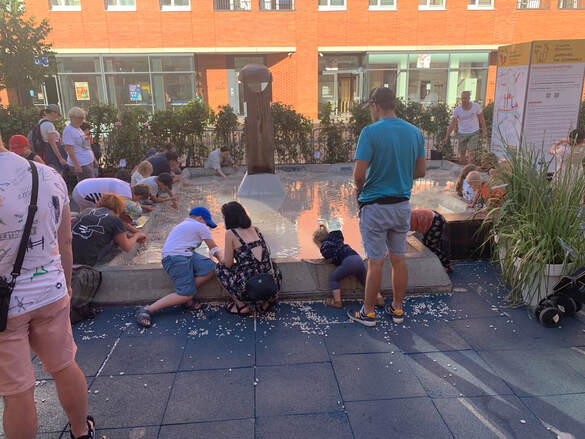

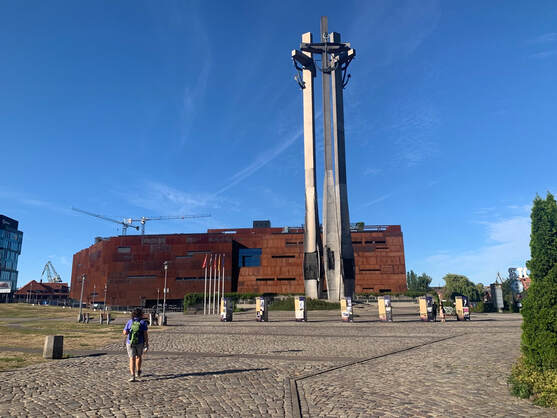














 RSS Feed
RSS Feed
